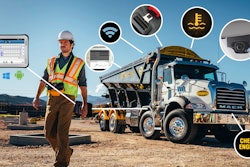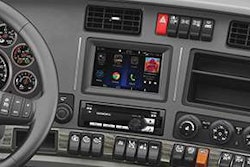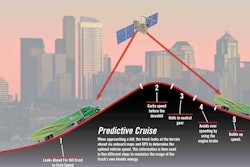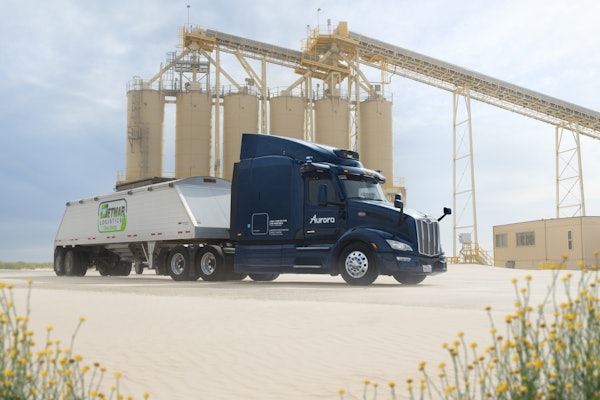Editor’s note: This is the third and final installment of the connected vehicle series. Parts 1 and 2 explored current and future projects between telematics companies and vehicle manufacturers.
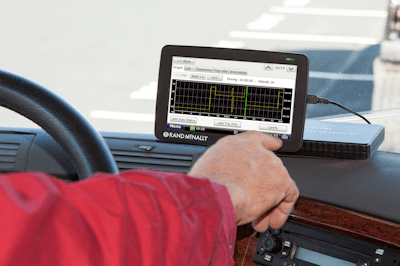
Connecting to vehicles in this way involves use of applications and highly structured workflows to maximize the utilization and performance of assets and drivers.
One such application that has already become part of the DNA of modern trucks is remote diagnostics, which also is an entry point for fleets to turn on more applications that make sense for their operations and drivers.
An open approach
Truck manufacturer Navistar has taken an open approach towards connected vehicle technologies. Its remote diagnostics portal, OnCommand Connection, captures data from vehicles using whatever telematics systems that its customers already use to manage the assets in their fleets.
Navistar recently began offering a credit to encourage more truck buyers to take advantage of telematics systems and its diagnostics portal. The credit pays $300 towards telematics hardware of the customer’s choice and for a two-year data plan.
Telematics provider Rand McNally is one of 14 companies that is currently integrated with OnCommand Connection. Its products transmit data to the portal, which gives fleet managers access to a dashboard of on-road performance metrics, active fault codes, severity ratings, and recommended action steps for repair and maintenance for each truck in the fleet.
For fault codes that require service, RandMcNally’s TND 760 in-cab device can map the location of the vehicle and nearby repair sites on its navigation app to make it convenient for drivers, the company says.
Condition-based monitoring
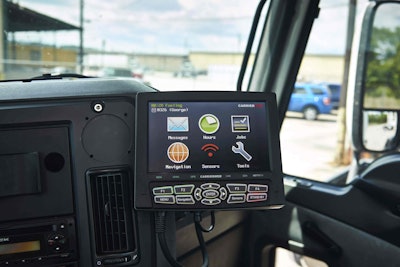 CarrierWeb plans to offer an app for the Android platform that will have many of the same features of its in-cab computing platform, CarrierMate.
CarrierWeb plans to offer an app for the Android platform that will have many of the same features of its in-cab computing platform, CarrierMate.For OEMs, connected vehicle technology is moving beyond remote diagnostics to condition-based monitoring, says Michael Cerilli, vice president and general manager of Navistar’s Connected Vehicle Business.
OEMs and telematics providers will soon be able to predict mechanical failures. Using analytical and diagnostic information will make it possible to establish new maintenance schedules and identify unique repair strategies for equipment, he says.
Cerilli predicts this “true preventative” maintenance breakthrough will be available by mid-2016. Another development he expects by then is remote, two-way communications with engines and components. Vehicle owners will be able to initiate the reprogramming and calibration of engines using the latest updates from manufacturers, he says, much like installing a new version of an app on a smartphone.
A single interface
The latest connected vehicle technologies are changing how drivers and fleet managers interact with vehicle and work information. Rather than use a dedicated terminal in the cab or PC in the office, all the information they need is instantly available from any mobile device.
“Everything is moving to an agnostic platform — a tablet, a phone, or an in-cab telematics device,” Cerilli says. “I think everyone realizes that we are emerging in app-based world. Trucking is heading there.”
Apps extend connectivity outside the cab, making it possible for drivers to login to their work environment from any device and see a personalized dashboard of information, from traffic to parking information on routes to the condition of their vehicles and job performance metrics.
Likewise, fleet managers have their own dashboards to stay connected to the status of their assets and drivers.
This app-based world is still in its infancy for industry-wide adoption. This will change within the next two years as enforcement of the pending Electronic Logging Device rule by the Federal Motor Carrier Safety Administration begins.
To be the ELD of choice for small carriers and owner-operators, telematics companies have to offer apps that negate the tradeoffs of lost productivity from electronic logs.
R. Fenton-May, chairman of CarrierWeb, an ELD and fleet management software provider, says one possibility is for telematics companies to partner with online brokerage firms to give fleets and drivers a better way to find loads and plan trips.
“I think that will be a great opportunity to help owner-operators make his or her business more efficient,” he says.
CarrierWeb is now working on a suite of Android applications, he says, to give drivers access to the same information on their personal devices that is available today on its in-cab platform. “Android lets us do that fairly easily,” he says.




